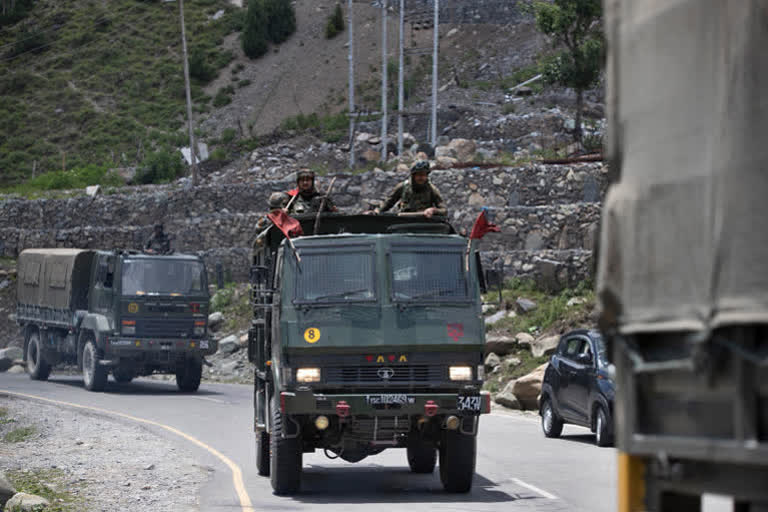New Delhi: Just after the conclusion of the Army Commanders’ Conference (ACC) meet at South Block on Tuesday afternoon, Indian Army chief General Manoj Mukund Naravane left in a military aircraft and reached eastern Ladakh, Ground Zero of the ongoing tense face-off between the world’s two biggest armies.
A source told ETV Bharat: “The Army chief has a three-fold agenda—a review of the precipitous situation in the region particularly in the backdrop of the violent Galwan Valley incident of June 15, a visit to the forward areas and interaction with the troops.”
In Ladakh, Gen Naravane will also communicate decisions to the Army because of the latest developments in Eastern Ladakh, the way forward, and ‘disengagement’ moves for the Indian Army which was an agenda item in the two-day ACC deliberations, held at South Block building, in the national capital.
Already the Indian military including the Army, Navy and the IAF are in a state of high alert and have started deploying military assets in the skies, on land and across the seas, mirroring aggressive moves made by the Chinese military.
Meanwhile, the talks between lieutenant-general level officers of the Indian and the Chinese armies on Monday—the second talks at that level since June 6—lasted more than 11 hours in a PLA border hut in Moldo, the Chinese outpost across Chushul in eastern Ladakh.
Read:China ordered attack on Indian troops, says US Intel
But despite the marathon run, what the meeting concluded was not very different from what the June 6 meeting took home with—one, a process of disengagement, two, de-escalatory deployment, three, the real test will be on what happens on the ground now.
Striking a positive note, Army sources stated on Tuesday: “There was a mutual consensus to disengage. Modalities for disengagement from all friction areas in Eastern Ladakh were discussed and will be taken forward by both the sides.”
On being asked about the long duration of the meeting, Army sources said meetings were usually very long when Indian and Chinese armies meet at the five meeting points on the Line of Actual Control (LAC), the de facto border between India and China.
“Every point is spoken of at least four times in these meetings. There are two translators on both sides who translate and repeat the questions and responses. Moreover, there is a detailed military protocol that is followed. And usually, with the border issue still unresolved and frequent face to face encounters between patrols, there are a lot of items that have to be discussed. That is why, India-Chinese army border meetings take time,” the source added.
Read:Jaishankar spells out ethos of int'l ties in presence of Chinese FM
In order to defuse border rows due to lack of clear demarcation of the LAC, the local commanders of the two armies regularly meet at five points along the border. On the Indian side, the five points, besides Chushul—are Daulat Beg Oldie (Ladakh), Nathu-La (Sikkim), Bum-La (Arunachal Pradesh), and Kibithu (Arunachal Pradesh).
At the moment, the world’s two biggest armies face each other at quite a few standoff points including Pangong Lake, Galwan Valley, and Hot Springs.
But in the 16 tumultuous days between June 6 and June 22, the two militaries had managed to avert a major crisis after at least 20 Indian soldiers including the commanding officer at Galwan Valley lost their lives in a very violent attack by PLA soldiers on June 15 night. While Indian casualties are known, the Chinese authorities have been tight-lipped about the PLA toll till now.
